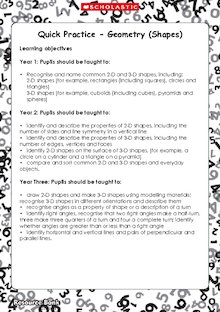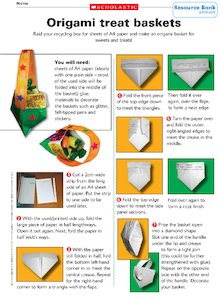Lower Key Stage 2 daily timetables – Week 2
- 5 Stars
- Supports home learning
Add to My Folder
We have created these daily home-learning timetables to help your children stay engaged and entertained from 9am–3.15pm!

Each timetable includes an hour’s learning on the core subjects of English and Maths, with sessions for other curriculum coverage and time for reading, breaks, snacks and daily exercise.
Remember not all days will go to plan and your child might not always be able to sit and work quietly for the allocated time. If needed, allow your child/children to pick and choose which activities they would like to do, or encourage them to focus on just one piece of learning per day.
Timetables:
1. Monday
2. Tuesday
3. Wednesday
4. Thursday
5. Friday
Monday
| Time: | Subject: | Notes: | ||||||||||
|---|---|---|---|---|---|---|---|---|---|---|---|---|
| 9.00-9.30 | PE |
Outcome/purpose: Continuous exercise for 30 minutes. Instructions: Practice throwing and catching with a soft ball, small cushion or soft toy. Set yourself challenges such as: Clap your hands a number of times before you catch Use one hand to catch – place the other hand behind your back Spin around whilst the ball/cushion or soft toy is in the air and then catch it Juggle more than one ball/cushion/soft toy Optional parent support: Play catch with your child and try the challenges when throwing to each other. | | 9.30-10.30 |
Maths |
Outcome/purpose: To recognise 2D and 3D shapes. To recognise different angles. Instructions: Download the ‘Quick Practice – Geometry pack’ here. Go to page 7 (for Year 3 pupils) or pages 10-11 (for Year 4 pupils). Complete the activities on the pages. Note: for the Year 3 activity on page 7, you will need lolly sticks and modelling clay. If you do not have these items you could use similar items such as tooth picks and Blu Tack®. If you have time, see if you can make 3D shapes from these Shape nets. Optional parent support: Check your child’s answers for errors and help them with any corrections. For Year 3: Play the game on pages 8-9 with your child. | | 10.30-11.00 |
Break |
Pop out for your daily walk or exercise! Remember to have a healthy snack such as a piece of fruit and don’t forget to wash your hands before you eat. | | 11.00-11.30 |
Reading |
Outcome/purpose: To read for 30 minutes. Instructions: Snuggle up with a book! Choose one of your favourite books and read for half an hour. Optional parent support: Ask your child to read aloud to you and ask them questions about the story. Such as: What do you predict is going to happen? Were there any words that you did not understand? Tip: If your child is a reluctant reader, you could take it in turns and read a paragraph each. | | 11.30-12.30 |
Science |
Outcome/purpose: To find out what happens when ice cubes are put in hot or cold water. Instructions: You will need: two ice cubes; two cups; access to hot and cold water; a stopwatch or similar timing device. You are going to find out the melting time for ice in cold and hot water. You are going to do this by putting ice cubes in hot and cold water. Make a prediction (guess) on what will happen to the ice cubes by answering these questions: How long do you think it will take an ice cube to melt in hot water? How long do you think it will take an ice cube to melt in cold water? Will one ice cube take longer to melt than the other or will they both melt at the same time? Fill one cup with boiling water (ask an adult to help you with this) and one cup with cold water. Make sure that the amount of water in each cup is the same. Place one ice cube in each cup. Make sure the ice cubes are the same size. Use the stopwatch or timer to time how long it takes for the ice cubes to melt. Write down how long it takes each ice cube to melt. After your have done the experiment, answer these questions: Was your prediction correct? Why do you think that the ice cubes melted at the speed that they did? Why was important that each cup had the same amount of water and that the ice cubes were the same size? Optional parent support: Help your child to conclude that ice cubes melt in water because the temperature of the liquid is higher than the temperature of the ice cubes. The hotter the liquid, the faster the ice cube will melt. Help your child to conclude that the amount of water in each cup and ice cube size had to be the same to make sure it was a fair test. Note: always supervise children around boiling water. | | 12.30-1.30 |
Lunch | If you have a garden or balcony, try to get some fresh air after lunch. Remember to wash your hands before eating! |
| 1.30-2.30 | English |
Outcome/purpose: To practise writing sentences. Instructions: Download ‘Quick Practice – Sentence types pack’. Complete the activities on pages 8-9 (Year 3) or pages 10-11 (Year 4). If you have time, cut out the boxes this worksheet and rearrange them to make different sentences. Optional parent support: Check your child’s answers. | | 2.30-3.15 |
Art |
To create an origami treat basket.
*Instructions:*
You will need: A4 paper, glue, scissors, materials to decorate your basket such as glitter, felt tip pens and stickers.
Follow the instructions on the worksheet to make your treat "basket":https://resource-bank.scholastic.co.uk/resources/28093.
*Optional parent support:*
Work through the instructions with your child if they struggle to follow them independently.
Work alongside your child and make one of your own, so your child has a good, scaffolded demonstration model.
|
Already a member? Sign in below.
Published 24 April 2020
Reviews
Rated 5/5 from 1 rating
You need to be signed in to place a review.



Sapna Prasad
on 29 April 2020
Weekly Timeatable
I love the ideas in the weekly timetable and also the format given for every subject and hourly programme.